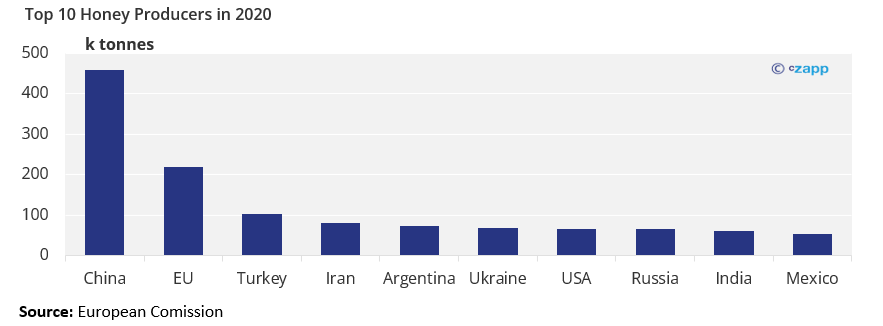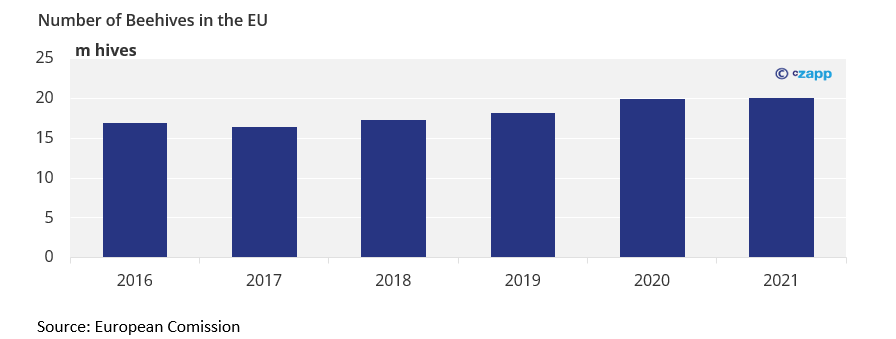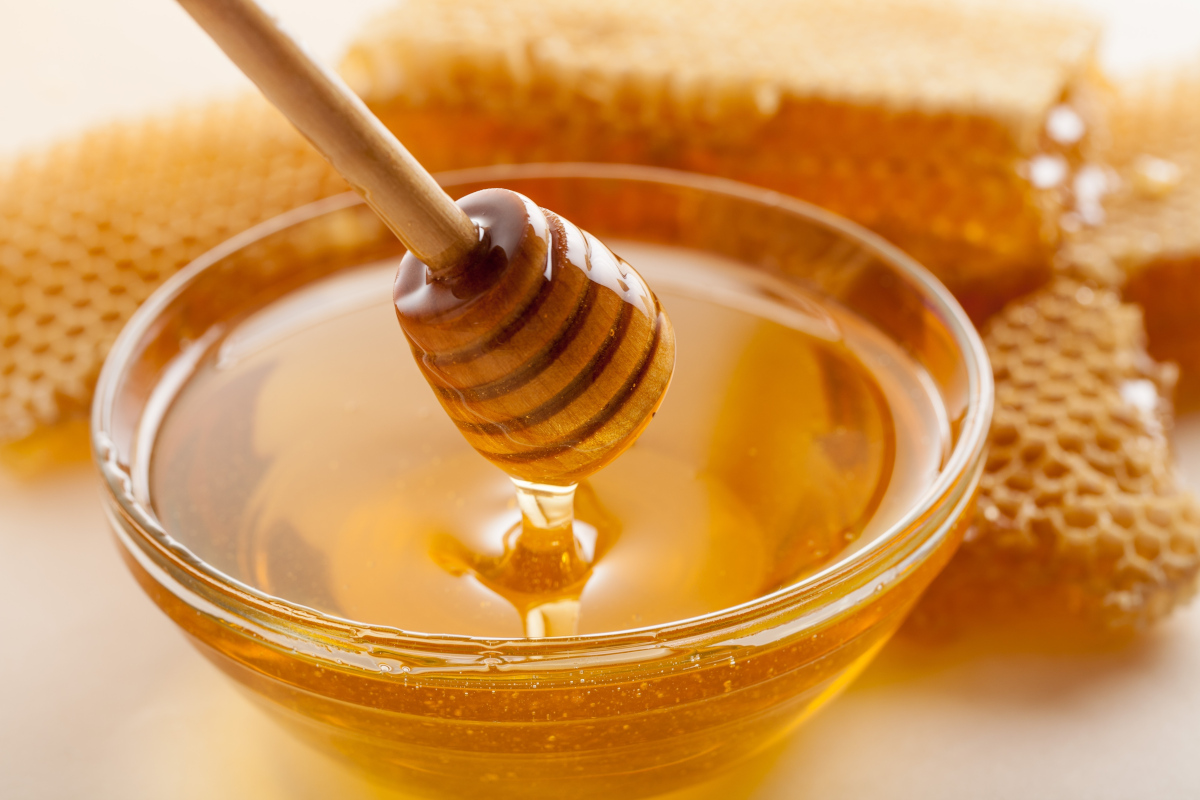Insight Focus
- Low priced, sub-standard honey was being imported into the EU.
- EU implemented labelling regulations for honey imports in response.
- As a result, honey trade flows into the EU have changed.
The world’s largest honey importer and consumer, the EU, has been forced to implement labelling regulations for honey to control the quality of honey coming in after some imports from Asia were found to be diluted with syrups, so-called “fake honey”.
EU Honey Production continues to increase but does not cover demand
The bloc is 60% self-sufficient in honey, meaning that imports are necessary to cover domestic demand. Most honey imports coming into the EU are from Asia. This is interesting because Asian honey exports have increased in the last decade but the number of hives has barely grown. In 2020, the EU produced 218k tonnes of honey, making it the second largest honey producer behind China, accounting for 12% of global production.

Honey production and the number of beehives have continued to grow over the last five years. However, consumption still outstrips production which means that the EU has to import honey to cover demand.


Most of the EU’s honey imports now come from Ukraine, China, Mexico, and Argentina. However, with the war between Russia and Ukraine, earlier this year, the EU had to increase imports from China. Before importing honey from Ukraine, the EU used to import most of its honey from India and China. However, in 2010 the EU discovered that most of the honey coming from India and China was “fake”.
The EU implements a Definition and Labelling Regulations for Honey
After the EU discovered that adultered honey was coming in it decided to ban imports from India and implement labelling regulations.
The EU currently defines honey as ‘is a natural sweet substance produced by Apis mellifera bees from the nectar of plants or from secretions of living parts of plants or excretions of plant-sucking insects on plants’. The EU’s definition of honey is similar to the US Food and Drug Administration’s. The only difference is that the EU decided to implement labelling regulations to control the quality of imports.
The new labelling regulations state that any honey that contains other sweeteners has to be labelled accordinglyto keep “fake honey” out of the EU. In addition, honey labelling must include the country of origin to reduce the risk of adulterated honey coming in.
In addition to its origin, the rules require honey manufacturers to state its compositoin has as a ”blend of EU honeys”, “blend of non-EU honeys”, or “blend of EU and non-EU honeys”. In certain cases, these names may be replaced by the simple product name ”honey” (except in the case of “filtered honey”, “comb honey” “chunk honey” or “cut comb in honey” or “baker’s honey”). Also the European Comission is allowed to adopt the laws for honey that is of floral or vegetable origin and the minimum content of pollen in filtered honey following the removal of foreign inorganic or organic matter.
Have labelling rules been successful?
The EU was the first to implement labelling for honey to ensure the quality of imports. It will be interesting to see if other countries faced with a similar issue, such as the US, adopt this policy. Currently, more and more countries are paying even greater attention to the quality of honey coming in because “fake honey” is cheaper than raw honey. As a result domestic beekeepers are slowly losing market share as they cannot compete on price with imports. The new labelling regulations are protecting EU beekeepers as well as controlling the quality of honey that is being imported.
Other Insights That May Be of Interest…
Seeking More Than ‘Plain’ Vanilla
Investors, Regulators Drive Carbon Labelling Agenda
Strong 2021/22 for EU Olive Oil Not Expected to Continue in 2022/23
Explainers That May Be of Interest…














